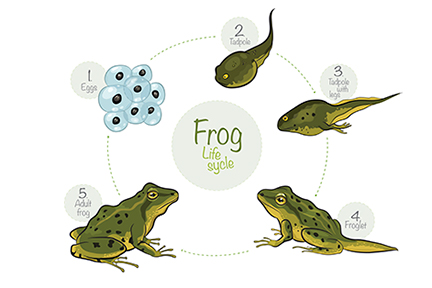Frogs begin life as tadpoles before they develop into a fully grown frog

Frogs begin life as tadpoles before they develop into a fully grown frog.

Frogs are fascinating creatures that undergo a remarkable transformation from watery beginnings to their adult form. They go through several stages of development, starting as tiny eggs and gradually transforming into a fully grown frog.
A frog begins life as an egg, which is usually laid in or near water. The eggs are typically attached to vegetation or other objects to keep them safe. These eggs are often found in large clusters, providing protection and support to one another.

The eggs will soon hatch into small, aquatic creatures known as tadpoles. Tadpoles are characterized by their long, slender bodies and lack of legs. They have gills, which allow them to breathe underwater. Tadpoles are solely aquatic and spend most of their time feeding on algae and other small aquatic organisms.
As the tadpoles grow, they undergo a remarkable transformation. Legs start to develop, beginning with the hind legs followed by the front legs. Gradually, the tail starts to shrink as the legs become stronger, signaling the tadpole’s transition into a young frog. During this stage, the young frog is commonly referred to as a “froglet.”
Eventually, the froglet develops fully functional lungs, allowing it to breathe in the air. At this point, the froglet’s tail has completely disappeared, and it has fully developed limbs to support its movement on land. The transformation from tadpole to frog is truly a marvel of nature.
Once the froglet has completed its transition into an adult frog, it leaves the water and begins its life on land. Adult frogs are known for their ability to hop, thanks to their powerful hind legs. They have a unique respiratory system, being able to breathe through both their lungs and their skin.
In conclusion, frogs begin their life cycle as eggs, progressing through the fascinating stages of tadpoles and froglets, before developing into a fully grown frog. This incredible transformation showcases the diversity and adaptability of nature. From a watery world to a life on land, the journey of a frog is both captivating and awe-inspiring.
Source: Home Science Tools
Related Posts
Quick Links
Legal Stuff

